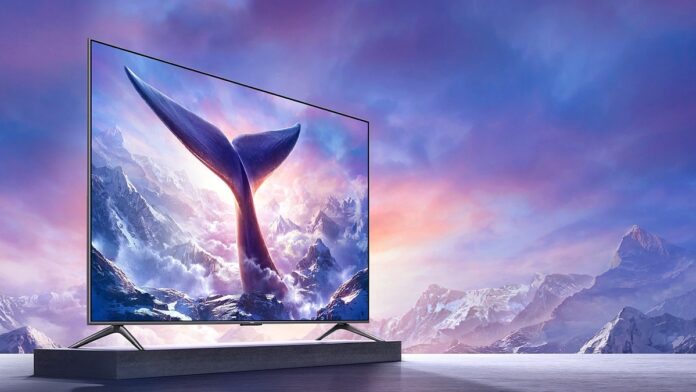Redmi Max 100-inch Ultra-HD LED TV was launched in China on Thursday, alongside the Redmi K50 series of smartphones. The smart TV sports a 100-inch 4K screen with a 120Hz refresh rate and 700 nits of peak brightness. The Redmi Max 100-inch smart TV offers Dolby Vision and HDR10+ support and comes with features like variable refresh rate (VRR) and auto low latency mode (ALLM) over HDMI for improved gaming performance. The smart TV is equipped with 30W speakers with Dolby Digital Plus and Dolby Atmos support, according to the company.
Redmi Max 100-inch TV price, availability
Redmi Max 100-inch TV is priced at CNY 19,990 (roughly Rs. 2,39,500) and will be available in a Black colour option. The Redmi Max 100-inch TV is listed for pre booking on the company’s website and will go on sale on April 6 in China. Xiaomi is yet to reveal when the TV will be available in other markets, including India.
The company previously launched the Redmi Max 86-inch TV priced at CNY 7,999 (roughly Rs. 95,700) in China last year.
Redmi Max 100-Inch TV specifications, features
Redmi Max 100-inch TV sports a 4K (3,840×2,160 pixels) IPS panel with a refresh rate of 120Hz and 700 nits of peak brightness. It comes with Dolby Vision, IMAX Enhanced, and HDR support — including HDR10, HDR10+, and HLG formats. The smart TV supports a 178-degree viewing angle. The smart TV also comes with AMD FreeSync, variable refresh rate, and auto low latency mode over HDMI, to reduce lag, tearing, and freezing when connected to current-generation gaming consoles.
The television is powered by an unspecified quad-core processor with Cortex-A73 cores and an Arm Mali-G52 MC1 GPU, along with 4GB of RAM and 64GB of storage. It comes with Dolby Digital Plus and Dolby Atmos support and is equipped with 30W speakers. Connectivity options on the TV include Wi-Fi 6, three HDMI ports (one HDMI 2.1 port), two USB ports, and an Ethernet port. Like other smart TV models from the company sold in China, the Redmi Max 100-inch TV runs on an unspecified version of MIUI TV, according to the company.
Source link


